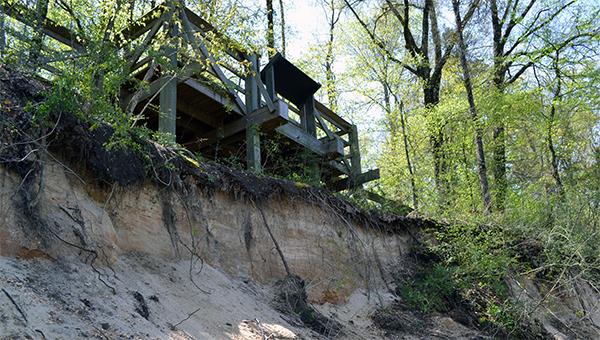Moundville Archeological Park was once home to an economic trading center from A.D. 1000 to A.D. 1450. It was also the largest city in what is now Alabama, bringing Native American tribes from all across the country together to trade artwork, food and ideas with one another.
Moundville was a complex society scholars had little knowledge of until archeologists began digging there in the late 19th century. Because there are no written records of Moundville during its height, everything learned about the site has come from ancient artifacts and excavations done mostly by The University of Alabama’s students and faculty members since the 1890s, who have answered the questions scholars have been asking for thousands of years.
Matthew Gage, the director of the Office of Archeological Research, said Moundville Archeological Park contains the remains of one of the largest prehistoric Native American settlements in the country.
“Moundville has major significance for both the Native American and archeological communities,” he said.
The portion on the outside bend of the Black Warrior River has been experiencing a major erosion problem since 2010. Gage said the site is one of the most important to preserve, considering less than a fifth of the area has been excavated.
“Moundville Archeological Park is working with the U.S. Army Corps of Engineers to begin a feasibility study – the first step in the effort to stabilize the shoreline and protect the site from additional damage,” he said. “The [Office of Archeological Research] has begun salvage excavations intended to save the most threatened portion of the shoreline from loss.”
Gage said these excavations are the first step in a much larger effort to save the remains and data before they are lost.
“It is very important to continue research on the Moundville site,” said Ted Nelson, a graduate student at the University who did his thesis research on a portion of the site. “This research includes analysis of already-excavated collections and modern excavations. While excavations will never be as extensive as the depression era digs were, they are still important. As new archaeological and anthropological theories become more widely accepted or new technologies become available, modern research will often call for more excavations with new or better techniques.”
Nelson said as recent as 2010, Jera Davis, a member of the anthropology department, uncovered many untouched areas of Moundville, including the discovery of underground homes.
Betsy Irwin, interim director at Moundville Archeological Park, said she hopes a solution can be found in order to preserve as much of the history of this civilization as possible.
“Archaeologists are assessing what areas are most in danger and excavating them first,” she said. “As the project continues, all areas possibly affected by the construction will be evaluated and excavated as necessary. The park will also look into reintroducing varieties of native plants which could help slow erosion along the river and in the park’s ravines.”
Amanda Morrow, education assistant at Moundville Archeological Park, said Moundville has benefited a great deal from the University’s involvement.
“It is a fabulous resource for UA students to have one of the most important archeological sites so close by,” she said.
Morrow said she enjoys getting to provide tours to many of the local schools and host various events throughout the year, such as the Moundville Native American Festival.









